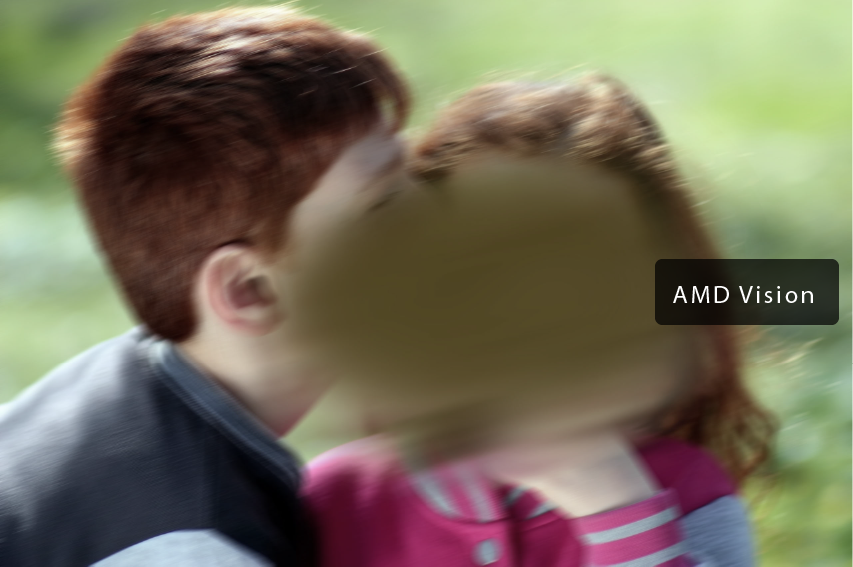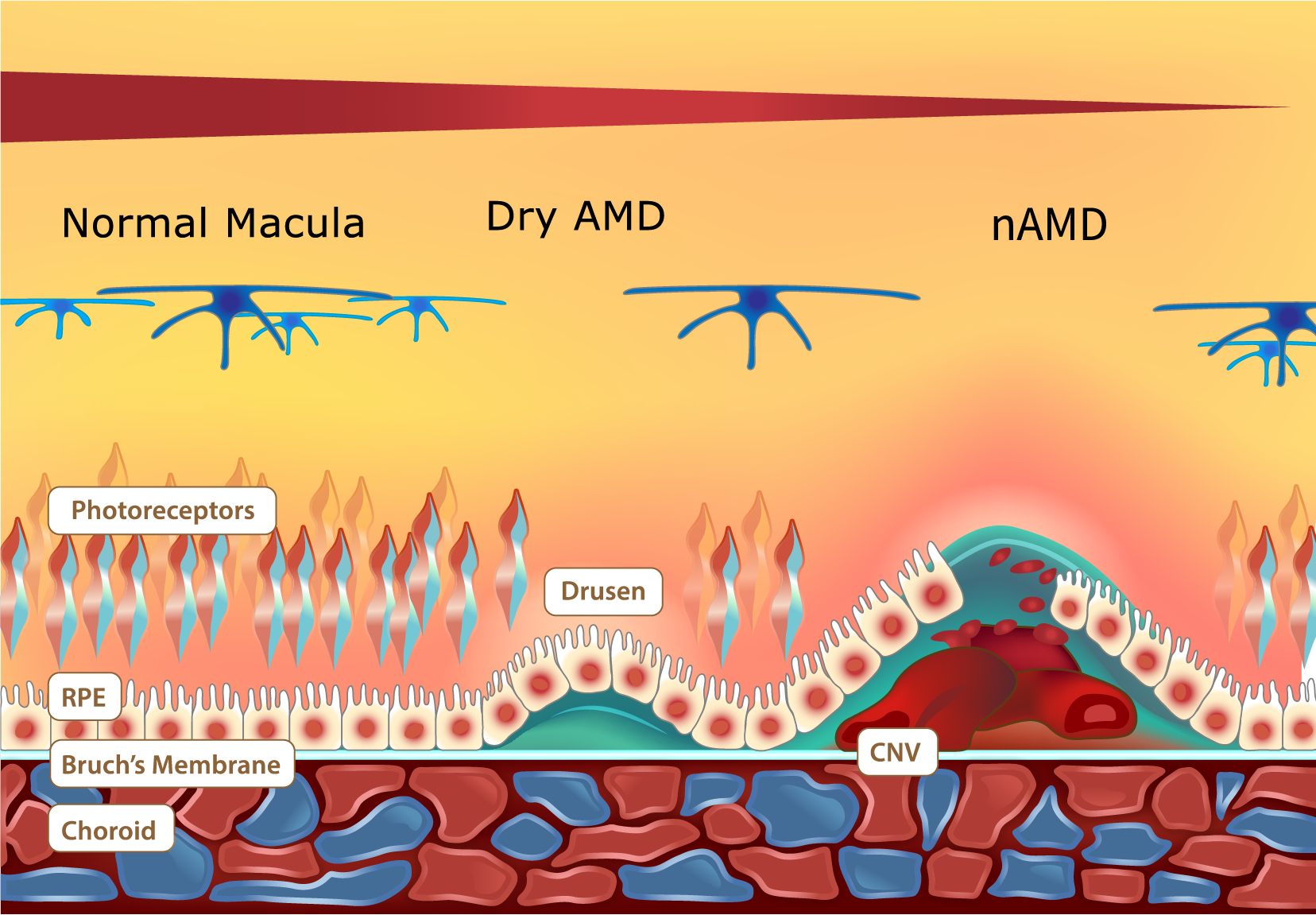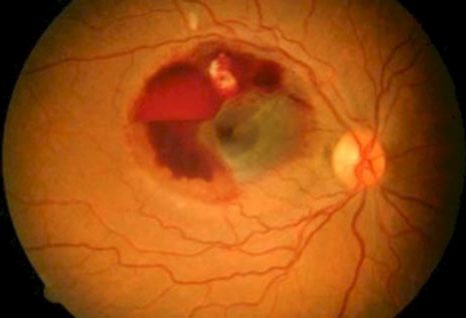
neovascular Age-related Macular Degeneration (nAMD)
The National Eye Institute indicates that nAMD is the most common cause of vision impairment among people >50 years of age. It is an eye condition where the macula, a spot in the retina situated in the back of the eye, is damaged. This leads to a blurred area in the patient’s vision, or blank spots.
In 2010, 10 to 15% of the 285 million vision impaired population was due to nAMD. nAMD accounts for 90% of severe vision loss caused by macular degeneration. It is predicted to affect 288 million people by 2040¹.
In nAMD, new blood vessels grow below the retina and begin to leak blood causing blockage of vision. In research studies, vascular endothelial growth factor (VEGF) and platelet-derived growth factor (PDGF) have in implicated to play an important role in this process.
To treat nAMD, researchers have developed anti-VEGF therapies, which have been used to slow down and even reverse the vision loss.
> Age 50
The leading cause of vision loss in adults over age 50²
5.4 mn
people are estimated to have nAMD in 2050³
US$11.5 bn
is projected for nAMD market in 2026⁴
Impact of age-related macular degeneration



Vascular leakage due to neovasculariztion in nAMD

Issues with Current nAMD Therapy
Although anti-VEGF therapies have had success in treating wet AMD, still ~50% of patients either do not respond to these drugs, or begin to lose efficacy over time due to fibrosis⁵. Anti-VEGF therapies also do not act on all the different mechanisms of retinal disease, and frequent injections cause a significant treatment burden.
Therefore, there is still an unmet medical need to develop new therapies to benefit patients.
2.National Eye Institute website. Accessed July 27, 2016.
3.News from National Institutes of Health. Accessed December 21, 2015.
4.Information based on GlobalData’s report 2019 for AMD
5.OPT-032, VEGF-C/D trap for eye diseases, presentation of Opthea, January 2018
